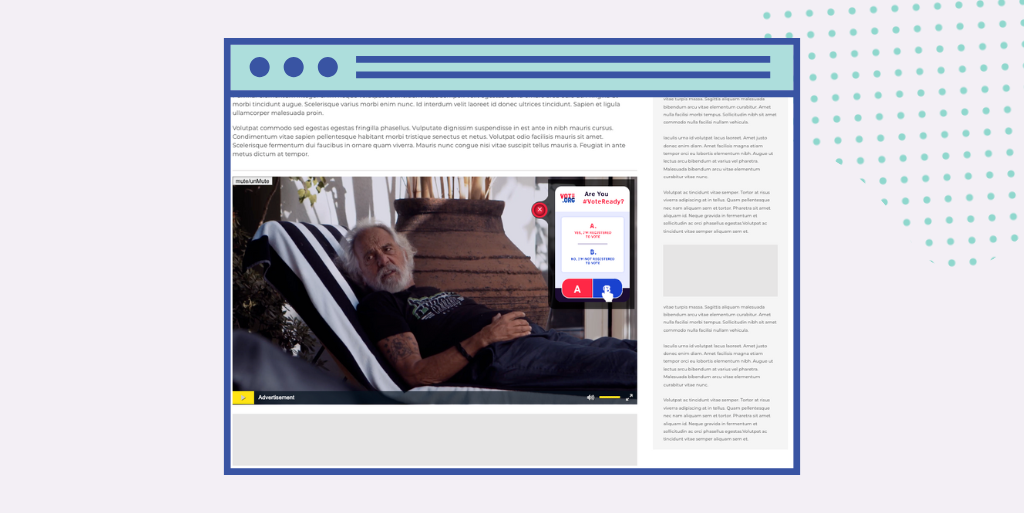Political campaigns are constantly seeking new ways to engage with voters and make a lasting impact. One of the most exciting trends in recent years has been the rise of interactive digital video ads for political advertising. These innovative ads allow viewers to actively participate in the campaign message, creating a more personalized and immersive experience.
So, what's next for campaigns when it comes to interactive ads? The possibilities are endless. With advancements in technology and data analytics, political advertisers can now tailor their messages to specific demographics and even individual voters. This level of personalization not only increases the effectiveness of the ad but also creates a sense of connection between the candidate and the viewer.
One emerging trend in interactive ads is the use of gamification. By incorporating interactive elements such as quizzes, challenges, and polls, campaigns can turn watching a political ad into a fun and interactive experience. This not only captures the viewer's attention but also encourages them to spend more time engaging with the campaign's message.
Another exciting development is the integration of advanced interactions across in-stream, out-stream, and connected TV (CTV) video. As technology continues to advance, political campaigns are finding new ways to engage with voters through interactive ads on various video-enabled platforms.
Instream videos, which are ads that play before or during online video content, can now include interactive elements that allow viewers to actively participate in the campaign's message. For example, viewers may be prompted to answer a question or provide feedback on a specific issue directly within the video. This level of interaction not only captures the viewer's attention but also encourages them to engage more deeply with the campaign's message.
Outstream videos, on the other hand, are ads that play outside of traditional video content, such as within articles or social media feeds. With the integration of advanced interactions, these ads can now provide a more immersive and personalized experience. For instance, viewers may be able to explore additional content or access interactive features like quizzes or polls without leaving the platform they are on. This seamless integration enhances the viewer's experience and makes it easier for them to engage with the campaign's message.
Furthermore, the integration of advanced interactions in connected TV (CTV) video ads opens up new opportunities for political campaigns to reach voters. With CTV, campaigns can deliver targeted ads directly to viewers' televisions, allowing for a more engaging and impactful experience. By incorporating interactive elements, such as clickable buttons, voice commands, or QR codes, campaigns can encourage viewers to take immediate action, such as signing up for updates or making a donation.
In conclusion, innovations in digital video political advertising are constantly evolving, and interactive ads are at the forefront of this revolution. As campaigns continue to embrace new technologies and strategies, the potential for engagement and impact is greater than ever before. Whether it's through gamification, personalized interactions, or QR codes, interactive ads are shaping the future of political advertising and revolutionizing the way campaigns connect with voters. So, what's next for campaigns? The possibilities are limitless, and it's an exciting time to be a part of the ever-changing world of political advertising.
Contact us to learn more about leveraging interactive digital video in your political campaigns in 2024.


